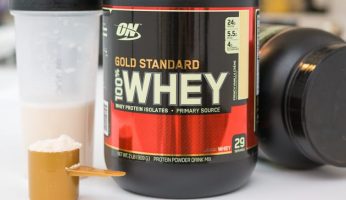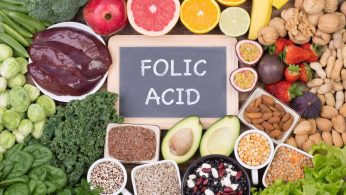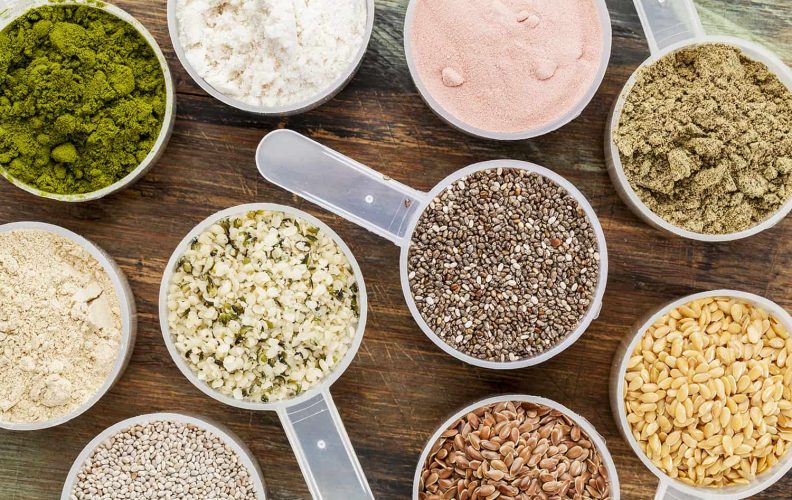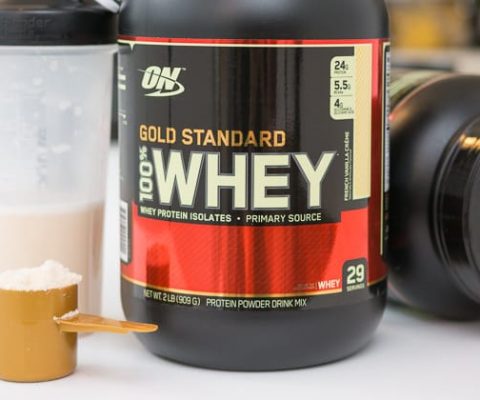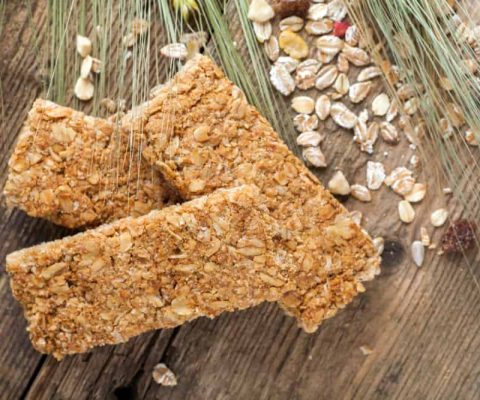Whey Protein: The Ultimate Guide
Disclosure: We use affiliate links and may receive a small commission on purchases.
 Whey Protein: The Ultimate Guide
thefitbay.com
Whey Protein: The Ultimate Guide
thefitbay.com
Whey protein is often consumed to improve muscle performance, lose weight, or to balance a nutrient deficiency (1). Today, the top-rated whey protein products have found their space in most supplements, health stores, and gyms. Yet, they come in many shapes, types, protein concentrations, and qualities.
In 2024, the market for whey protein should reach 15.4 billion dollars, which will represent an almost 55 percent increase since 2018. Based on this increasing demand, the number of different types of whey protein brands and options has flourished. Because the product you pick affects both its efficiency and health benefits, understanding whey protein is critical.
Luckily, regardless of your intended use, you should find a product meeting your needs. Here is everything you need to know about whey protein for a successful supplementation.
What Is Whey Protein?
Starting with the basics, let’s discuss how whey protein is obtained, is whey protein protein, and what it’s made of.
General Overview
Whey is a byproduct of the cheesing or yogurt making production (2). In its original form, milk contains 20 percent of whey and 80 percent of casein proteins (3).
During processing, they separate. Casein becomes a thick curd while whey turns into a watery substance that is collected, processed, and often sold as a dry powder. This end product can then be further used to make high-protein snacks, or sold as a supplement to mix with water or even smoothies.
What’s Inside Whey Protein?
Whey contains various types of proteins, which contain important Branched Chain Amino Acids — or BCAA.
- Beta-Lactoglobulin:
This protein represents between 50 and 55 percent of whey protein’s content. It’s also a good source of BCAA, aiding in athletic performance by limiting muscle breakdown and glycogen use during exercise (4). - Alpha-Lactalbumin:
This compound contains a high amount of the amino acid tryptophan responsible for serotonin production. It promotes sleep and mood improvement (5). Alpha-lactalbumin makes about 20 to 25 percent of whey. - Glycomacropeptide:
Depending on how whey protein is produced and its level of concentration, a product can carry from none to 15 percent of this protein. It could prevent dental plaque and caries from forming, and remineralize teeth enamel (6, 7). - Immunoglobulins:
These proteins tend to improve immunity, and generally make 10 to 15 percent of the powder (8). - Bovine Serum Albumin:
This abundant protein contains high amounts of glutamyl cysteine and sulfur amino acids. The two compounds are necessary for the production of glutathione, which is a natural and powerful antioxidant produced by the body. You’ll typically find 5 to 10 percent of it in whey protein (9, 10, 11). - Lactoferrin:
This protein only makes one to two percent of whey protein. Because of its ability to bind to iron, it’s efficient at reducing bacteria, viruses, and fungi growth. It’s often used to treat gastrointestinal ulcers, hepatitis C, diarrhea, or even iron deficiency (12). - Lactoperoxidase:
It makes about 0.5 percent of whey protein. Yet, it has a natural antimicrobial property, and can even inhibit the bacteria Escherichia coli (13). - Lysozyme:
Whey protein contains 0.1 percent of this protein. It also carries antimicrobial and antibiotic properties (14).
| Main Components | Percentage Contained | Properties |
|---|---|---|
| Beta-Lactoglobulin | 50 - 55% | Improves performance |
| Alpha-Lactalbumin | 20 - 25% | Enhances sleep and mood |
| Glycomacropeptide | 0 - 15% | Improves immunity |
| Immunoglobulins | 10 - 15% | Improves immunity |
| Bovine Serum Albumin | 5 - 10% | Participate in antioxidant formation in the body |
| Lactoferrin | 1 - 2% | Improves immunity |
| Lactoperoxidase | 0.5% | Improves immunity |
| Lysozyme | 0.1% | Improves immunity |
Processing Whey Protein
Whey protein can be separated and filtered using one of the two methods further described. Unfortunately, this information isn’t always included in the packaging. You may need to contact or check the manufacturer’s website to know which type of processing is used.
Ion Exchange
This type of processing uses chemicals such as hydrochloric acid or hydroxide. The liquid goes through a tube to adjust the pH and separate the protein. It typically makes products with extremely high protein content — 90 to 96 percent. The amount of carbohydrates and fats is also minimal. They usually contain 6 to 10 fewer grams of carbs per scoop, compared to the membrane filtration method.
Ion exchange also comes with noticeable downsides. This type of manufacturing process significantly decreases health benefits.
The presence of essential amino acids and antioxidants are significantly reduced, including its ability to support the immune system. Digestion of both protein and calcium is also impacted.
Finally, you may notice that these products have a different flavor. You won’t feel the dairy aroma as much, and it typically tastes more processed and salty than membrane filtered powders.
Membrane Filtration
This process makes powders with the most health benefits. Low temperatures are used, which keeps whey as close as possible to its original state.
The liquid also goes through a filter with various pore sizes. As a result, proteins, but also carbs, minerals, and immunomodulant compounds, remain. Nevertheless, these products still provide high protein content — over 90 percent with little fat and lactose.
Summary: Ion Exchange vs. Membrane Filtration
If you’re taking whey protein for its many health benefits, have a close look at its manufacturing process. Membrane filtration processing conserves healthy proteins and minerals. The ion exchange method contains fewer carbs, but most of the beneficial properties are removed during the process.
Who Uses Whey Protein?
Products with whey powder protein were mostly used by professional athletes. Today, a larger portion of the population consume it, such as:
- Athletes.
- Bodybuilders.
- Active individuals.
- People trying to lose weight.
- Those looking to balance a nutrient-deficient diet.
- Anyone looking for a healthy and tasty snack.
Types of Whey Protein
There are three types of whey proteins and are always indicated on a product’s label.
- Concentrate.
- Isolate.
- Hydrolysate.
Whey Protein Concentrate
These whey protein products are less processed than the other two categories, yet still contain low amounts of carbohydrates and fat. As for the protein content, you’ll have to look carefully at the label. Some are more concentrated than others and can offer from 30 to 90 percent of protein.
Generally speaking, whey concentrate is ideal if you’re looking to gain weight. The fatty composition typically gives it a richer taste. You’ll find that these types of supplements are generally the most affordable of all three types.
Pros
- Less processed.
- More nutrition — more fat and carbs.
- It contains a good amount of proteins.
- Affordable.
Cons
- Some can contain low protein percentages.
Whey Protein Isolate
Whey isolate is the most popular type among those looking to shred some weight. It’s also suitable for anyone suffering from lactose intolerance as it contains less of it than the concentrate type.
Additional lactose and fat are removed, with protein countenance reaching at least 90 to 95 percent. This explains the higher price point of these products.
Pros
- Low-fat — good choice for weight loss.
- It contains less lactose than the concentrate type.
- Extremely high protein content.
Cons
- More expensive than concentrate.
Whey Protein Hydrolysate
If you’re generally having a hard time digesting protein powders, this type might be the most suitable. The whey protein goes through an additional manufacturing step called “hydrolysis.” It corresponds to our first digestive process, which consists of breaking down long protein chains into shorter ones, called peptides.
The hydrolysate is “predigested” and easier for the body to assimilate. This type is sometimes used in medical formulas and supplements destined for both adults and infants.
You won’t even have to trade digestive aid for efficiency. The hydrolysate still contains between 80 and 90 percent of proteins. They generally make protein bars, drinks, and other supplement products.
Pros
- Easier to digest than both previous types.
- High protein content.
- It comes with various fat levels to meet all needs.
Cons
- Makes the most expensive whey protein products.
Summary Tables
If you’re uncertain about which one to choose, the following tables might help.
General Comparison
All types of whey proteins provide high-quality proteins. As you’re shopping for gold standard whey protein powder, you may notice that some products include a blend of two or three types.
| Types of Whey Protein | General Uses | Protein Content | Fat Content | Lactose Content | Cost |
|---|---|---|---|---|---|
| Whey Protein Concentrate | Weight gain, individuals with nutrient-deficiency | 25% - 89% | 4% - 52% | 1% - 9% | $ |
| Whey Protein Isolate | Weight loss, lactose-intolerant individuals. | 90% - 95% | 0.5% - 1% | 0.5% - 1% | $$ |
| Whey Protein Hydrolysate | Anyone with digestive troubles. | 80% - 90% | 0.5% - 10% | 0.5% - 8% | $$$ |
Isolate vs. Concentrate
How do these numbers relate to you and the product you’re buying? Here are the amounts for 100 calories worth of whey protein. Have a look at the product’s packaging; these nutrients facts are always indicated and can vary from one brand to another.
| Nutrition Facts | Whey Protein Concentrate (in grams) | Whey Protein Isolate (in grams) |
|---|---|---|
| Proteins | 18 | 23 |
| Fats | 1.5 | 0 |
| Carbohydrates | 3.5 | 1 |
| Lactose | Up to 3.5 | Up to 1 |
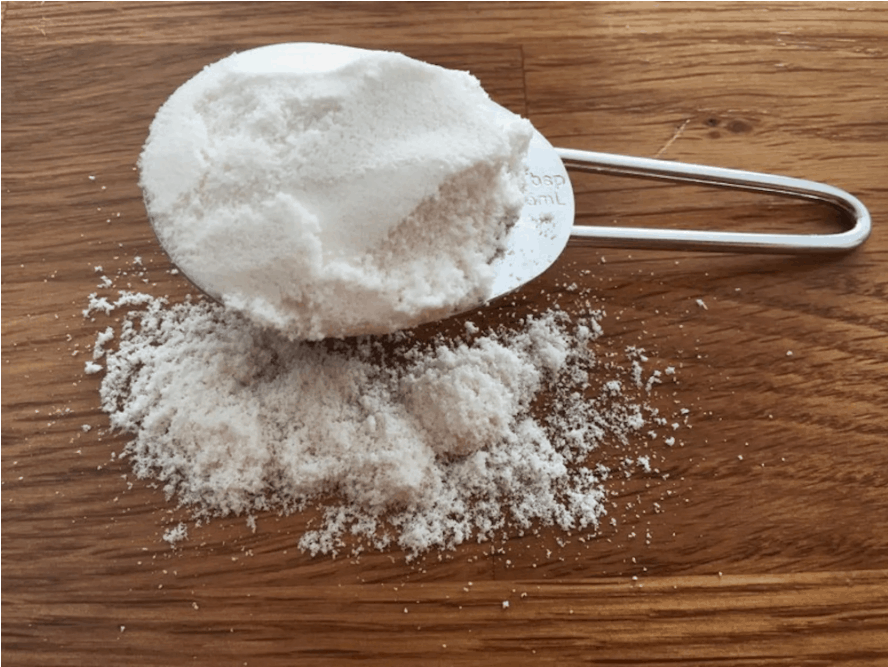
Summary: Concentrate, Isolate, or Hydrolysate?
Concentrate, isolate, and hydrolysate whey proteins come from the same raw material and source: milk. The concentrated type is more affordable and nutritious, but isolate is often more suitable for those looking for high protein products or to lose weight. The hydrolysate whey protein is the most processed kind, therefore, the easiest to digest. It, however, comes at a higher price-point.
Whey Protein Benefits
Whichever type you decide to purchase, the perks and benefits of whey protein are numerous.
- Increases protein intake.
- Fights aging.
- Anti-cancer properties.
- Lowers cholesterol.
- Helps with hypertension.
- Boosts the immune system.
- Reduces stress.
- Beneficial in early life stages.
- Lowers blood sugar.
- Assists in weight loss.
- Improves performance.
- Acts fast.
#1. Increases Your Protein Intake.
Many people can reach their daily intake of 0.8 grams of protein per kilogram of body weight through food. Tuna, chicken, or even greek yogurt can provide a considerable amount per serving. For some of us, however, getting the right amount of protein daily isn’t that simple (15).
When life is hectic, protein powders can help ensure you’re reaching the recommended daily dosage. They can be easily mixed into a smoothie and carried with you on your adventures or commitments.
Besides, whey protein can also be more cost-efficient than consuming meat. It also avoids ingesting the high fat and carbohydrate content that comes with animal products.
#2. Fights Aging
As we discussed, whey protein contains a high concentration and variety of amino acids. Yet cysteine and leucine are the ones that stand out when it comes to antioxidant and anti-aging properties.
Cysteine
Cysteine was shown to improve glutathione levels, which have proven to carry strong antioxidant properties (16). This amino acid should help combat free radicals and oxidative stress, which are both responsible for early aging and cellular damage.
Leucine
Leucine is another amino acid present in whey. Compared to most other animal and plant-based protein sources, it has the most of it — 13.6 percent (17).
Although more research is needed, leucine may improve skin and bones’ health, muscles’ growth, and weight loss. It may also help to regulate blood-sugar levels and increase the production of the human growth hormone (18).
#3. Anti-Cancer Properties
Cysteine and its ability to replenish glutathione levels showed promising results regarding anti-cancer and anti-tumor activities. It had a positive effect on colon cancer in rats, compared to diets supplemented with either casein, meat, or soy. Overall, it seems to be twice as effective in reducing tumor incidence and spreading rate, in comparison with soy protein (19, 20, 21).
#4. Lowers Cholesterol
A study was done over 12 weeks, 70 selected individuals using whey, casein, or glucose supplementation. The group that was administered whey protein supplementation significantly decreased both their total and LDL cholesterol — also called “bad” cholesterol (22).
#5. Helps with Hypertension
Today, 1.13 billion people suffer from hypertension worldwide. It’s also one of the most significant causes of premature death (23).
A study conducted over six weeks concluded that drinks containing whey protein could decrease blood pressure on both genders. This study also confirmed the decrease in LDL cholesterol previously mentioned (24).
Hypertension and cardiovascular diseases are often related. It’s interesting to note that whey protein was also proven efficient at improving vascular function on obese and overweight individuals (25).
#6. Boosts Immune System
Whey protein is highly efficient at boosting the immune system and fighting invading pathogens. Compounds such as immunoglobulins, lactoferrin, lactoperoxidase, and lysozyme have antimicrobial properties. They help fight bacteria, viruses, and fungus.
Besides, you’ll find that many powders are supplemented with vitamin D, a known immune booster. It decreases the risk of infection and improves autoimmunity (26).
#7. Reduces Stress
Remember that whey contains 20 to 25 percent of alpha-lactalbumin protein. This compound, high in tryptophan, was tested on 29 subjects suffering from stress. Levels of cortisone, pulse, and mood changes were all assessed during the evaluation.
The study concluded in a decrease in the stress hormone cortisol and depressive symptoms. Exercise has also proved to be efficient at increasing serotonin levels and lowering stress. Working out and supplementing with whey protein should keep you healthy and sane (27, 28).
Consuming whey over eight weeks was shown to be efficient at reducing psoriasis symptoms. This skin condition creates scaly red and itchy patches, which can be caused by emotional stress (29, 30).
#8. Beneficial in Early Life Stages
Research has shown that consuming whey protein drinks between the age of three and 12 months can be advantageous for infants. It can limit the risk of developing eczema by the time they reach three years old. Whey can also reduce the likeliness of suffering from allergies (31).
Keep in mind that using whey protein doesn’t seem to have a beneficial effect once eczema or allergy symptoms are already declared.
#9. Lowers Blood Sugar
It seems that whey protein can help with health conditions affecting many Americans today. In addition to helping with hypertension, low immune system, or even stress, it can also decrease blood sugar levels (32).
Fourteen patients with Type 2 Diabetes were asked to supplement their regular breakfasts and lunches with whey protein for this study. Results showed a higher insulin response when whey protein was added to the meal. Blood sugar levels decreased by 21 percent after two hours of ingestion.
In addition, a trial was done on rats with non-alcoholic fatty liver disease, which is also often caused by insulin resistance. The administration of whey protein in this research also concluded positive initial results. They noted a decrease in serum glucose, triglycerides, and liver enzymes levels (33).
#10. Assists with Weight Loss
Decreases Hunger
Meals with a high quantity of protein generally keep you full longer. You shouldn’t be tempted to go for a side snack that may contain many more calories than your whey protein shake. Besides, they generally come in various flavors to match all tastes and cravings (34).
It should stop hunger until your next meal while providing sufficient energy, whether you’re taking it in the form of a protein bar or blended in a smoothie. After a 6-month trial, researchers found that the group drinking two whey protein shakes a day lost an average of two pounds and an inch around the waist.
Indeed, whey proteins reduce the ghrelin hormone in the blood. This compound helps to regulate the amount of food you consume. The lower the level, and the less hungry you’ll feel (35).
Weight Loss
More research needs to be done to find conclusive results between whey protein and weight loss. Diet remains the most important factor when trying to lose weight.
Some studies, however, have shown promising outcomes. A study showed that more body fat and less muscle mass were lost during a diet containing a whey protein supplementation. In the conclusion of another research study, over 627 adults supported the use of whey protein to improve body composition (36).
Summary: Whey Protein and Weight Loss
The high amount of protein contained in the powder helps you feel full longer. By reducing ghrelin hormone in the blood, it also contributes to decreasing hunger. Although more research needs to be done, studies have shown that whey protein supplementation can reduce fat while maintaining muscle mass. This results in overall improved body composition.
#11. Improves Performance
Most users use this milk byproduct to improve performance and strength. Does whey protein stand up to its reputation?
Provides Fuel for the Muscles
While muscles need oxygen and blood to function, they also require protein, which are the building blocks of our body. Drinking or eating whey protein provides your muscles with the needed amino acids for muscle growth and repair between workouts (37).
Promotes Muscle Gain
The analysis of several studies concluded that protein supplementation could have a positive impact on muscle protein synthesis and growth. Results were the same for trained and untrained individuals.
Plus, it could improve both anaerobic and aerobic power. You’ll, however, have to persevere. Studies didn’t show positive outcomes during the few weeks of training.
The intake of 15 grams of whey protein seemed to be more efficient when taken within a day after a resistance-training workout. You’ll also need to exercise until you reach fatigue (38).
We mentioned earlier that whey protein contains a substantial amount of the amino acid leucine. This compound stimulates protein synthesis in muscle, even more so than any other BCAA. It also decreases the speed of protein breakdown in a resting muscle (39, 40).
#12. Acts Fast
Not all proteins are made equal, and some are easier to digest and absorb than others. Whey protein gets released in the blood at a rate of about 10 grams per hour. This means that within two hours, you’ll have fully absorbed your 20-gram protein shake (41).
An egg, as a comparison, takes three hours to ingest. As a result, you’d need seven hours to absorb 20 grams of protein from this protein source.
While consuming both types of proteins is important for muscle growth and health, whey can provide quick muscle repair after an intense workout. Some brands include various types of protein powders — such as soy or casein. This is to provide both fast and slow protein absorption rates (42).
Summary: Benefits of Whey Protein
The antioxidant properties of cysteine and leucine help combat aging and cell degeneration. The powder can also decrease stress, cholesterol, blood sugar levels, and hypertension while boosting the immune system. Although more research needs to be conducted, there are also several indications that it can assist with weight loss and muscle synthesis.
Whey Protein Side Effects
Whey protein dangers are limited and don’t outbalance the benefits it offers. It’s important to consider that studies on the long-term effects of different types of whey protein intake are insubstantial. It’s, nevertheless, a supplement that’s regarded as likely safe for both adults and children.
Yet, adding whey protein to your diet comes with contraindications, precautions, and some mild side effects:
- Stomach upsets.
- Lactose intolerance.
- Drug interactions.
- Use during pregnancy.
- Hidden sugar and calories.
- “Sugar-free” protein powders.
- Potentially harmful chemicals.
#1. Stomach Upsets
Intake of certain types of whey protein can cause stomach pain and cramps in some individuals. Others may experience nausea, headaches, and fatigue symptoms.
#2. Onset of Acne
It’s still unclear if acne is due to toxins and chemicals contained in some whey protein’s brands or due to hormonal disruption. Nevertheless, milk is also one of the most investigated elements as a potential acne onset.
A study was done on 30 subjects over 60 days to determine the degree of whey protein’s impact on the skin. Acne was observed — or aggravated — especially among females. If you’re already struggling to keep your skin clear, this is an essential factor to consider (43).
#3. Lactose Intolerance
In the United States, about one-third of the population is lactose intolerant (44). Lactose is the sugar contained in milk and is digested by an enzyme called lactase. People suffering from this intolerance don’t have enough of this enzyme, leading to gastrointestinal discomfort after consuming dairy.
Individuals with mild lactose reactions tend to support whey protein. In this case, however, it’s recommended to drink isolate versus the concentrate type, which contains more lactose.
Those with a high intolerance to this protein shouldn’t avoid whey. You might want to look at plant-based protein powders and snacks to avoid lactose.
#4. Drug Interactions
Whey protein can affect the metabolization and effects of certain drugs. Here are a few examples of compounds and medications to watch out for:
| Compound | Medication Name | Effect |
|---|---|---|
| Albendazole | Albenza (Kills parasites) | Delay or reduces the drug’s effectiveness |
| Alendronate | Fosamax (Osteoporosis) | Reduces the drug’s absorption |
| Quinolone | Ciprofloxacin (Cipro) Enoxacin (Penetrex) Norfloxacin (Chibroxin and Noroxin) Sparfloxacin (Zagam) Trovafloxacin (Trovan) Grepafloxacin (Raxar) | Reduces the drug’s absorption |
| Tetracycline | Demeclocycline (Declomycin) Minocycline (Minocin) Tetracycline (Achromycin) | Reduces the drug’s absorption |
| Levodopa | Demeclocycline (Declomycin) Minocycline (Minocin) Tetracycline (Achromycin) Levodopa (Parkinson’s disease) | Reduces the drug’s absorption |
Medications containing quinolone and tetracycline compounds are generally antibiotics. Consume whey protein at least one hour after taking medicine with quinolone. If you need to combine the supplement with tetracycline, wait at least two hours before or after taking the drug.
If you’re taking medicine and unsure if whey protein is adequate, make sure to look for medical advice.
#5. Use During Pregnancy
If you’re pregnant or breastfeeding, it’s best to avoid the use of whey protein. While there aren’t any clinical studies indicating its use is unsafe, it’s better to stay on the safe side.
#6. Hidden Sugar and Calories
Whey protein composition can significantly vary from one brand to another. To make the taste more attractive, many manufacturers add a large amount of sugar, making your protein shake more caloric than initially thought.
Have a look at the nutrition fact label as the sugar content should be mentioned. Some brands add 23 grams of sugar per scoop of whey protein.
#7. “Sugar-Free” Protein Powders
Along the same line, watch out for “sugar-free” products, as you may find artificial sweeteners. You can spot them on the label displayed as aspartame, acesulfame potassium, or sucralose. They’re added to keep calorie-count low while maintaining a sugary taste.
While more research needs to be done to determine exact side effects, some studies have shown correlations with leukemia, brain function, or even fibromyalgia. Other sweeteners can also cause gluten intolerance and modify the gut microbiota (45, 46).
Although stevia comes in various qualities, it’s plant-based, and usually, a better option if you don’t want the extra calories sugar comes with.
#8. Potentially Harmful Chemicals
The presence of toxins and metals in the powder can also be a concern. Unfortunately, these aren’t displayed on the nutrition fact label. These compounds can find their way into the product during the manufacturing process, or when grown in contaminated soil, water, or environments (47).
Heavy Metals
Selecting your protein brand is a critical process. Research conducted by the Clean Label Project assessed 134 brands against 130 potential toxins (48). Bear in mind that the study included both whey and plant-based protein powders.
In these samples, they found a considerable amount of heavy metals content — 70 percent of lead, and 74 percent of cadmium. Sadly, even organic protein powders had twice the amount of heavy metals, compared to regular ones. What’s the impact on our health?
Cadmium exposure has been linked to kidney damage and bone fractures (49). As for lead, it can have a severe impact on children and during pregnancy. Because it accumulates in the body, even a small amount of it can lead to decreased learning disabilities and other neurological impairments (50).
BPA Compounds
On top of that, 55 percent of the tested brands showed BPA traces. This type of plastic can have a potentially harmful effect, causing birth defects or tumors. One of the manufacturers even had 25 times over the maximum BPA dose allowed in a single serving.
Some studies revealed that BPA is an endocrine disruptor, interacting with estrogen receptors. It’s, therefore, dangerous with hormone-dependant cancers and can negatively impact fertility and puberty in teenagers (51).
Artificial Colorants and Flavors
Artificial Flavors
As you can guess, natural whey doesn’t come in a chocolate or strawberry flavor. These artificial additives are added to make your shake more palatable. They’re chemical and made in a laboratory.
On the ingredient list, they’re usually listed as “artificial flavors” without much more detail. The challenge is that there exists an unlimited number of food additives. Many of them are carcinogenic or haven’t been tested yet (52).
Food Dies
Along with artificial flavoring, most products come with artificial food coloring to give your chocolate powder its “brown” shade. While not all food dyes are necessarily dangerous for health, they can induce cancer in animals or hypersensitivity reactions. Red 40, Yellow 5, and Yellow 6 are only a few examples (53).
Luckily, you’ll find unflavored and uncolored powders. If you want a strawberry taste, it might be best to throw fruits in the blender!
The Cleanest Brands and Top Five Dirty
Now you may be wondering which of these brands contain the most harmful compounds and which manufacturers came out the cleanest?
Here are the best and least desirable brands from the study conducted by the Clean Label Project.
| Cleanest Brands | The Dirty Five |
|---|---|
| Puory | Vega (Plant-based) |
| BioChem | 360Cut |
| BodyFortress | Quest |
| Performix | Nature’s Best |
| Body Protein | Garden of Life |
Summary: Is Whey Protein Good For You?
Consuming too much whey protein can lead to stomach pain and discomfort. Lactose-tolerant individuals should pick the isolate type and avoid it entirely in severe conditions. Consult your doctor if you’re taking medications to avoid drug interactions. Select the brand carefully to limit extra calories and prevent harmful chemicals and heavy metals.
Intake, Dosage, and Supplementing
How Much Protein Powder Is in a Scoop?
You’ll notice that whey protein dosage indicates a number of grams to ingest daily. Are you wondering if you’re scooping the right amount? Every protein powder comes with a graded dosage cup to adjust the needed quantity.
What becomes tricky is that brands include different cup sizes containing various amounts of protein. First, have a look at the label and nutrition facts.
The number of grams provided for each scoop should be indicated. If one cup contains 20 grams of protein, you may not need more than two or three — for a sedentary 150-pound individual.
Regular Dosage
If you’re looking for a set number of grams to take daily, you might be disappointed. Proper whey protein intake can significantly vary from one individual to another. In most cases, the dosage changes according to body weight, protein from the diet, and activity level.
Activity Level and Body Weight
First, you need to take into account your total daily protein requirement. How active you are and how much you move both determine how many grams you need daily.
There is some evidence that the recommended intake might be underestimated (54). Yet, most professionals still advise consuming at least 0.8 grams of protein per kilogram of body weight. That’s 0.36 grams per pound.
This dosage, however, is only applicable if you have a sedentary lifestyle without the desire to modify your body composition.
For more active individuals, athletes, or to lose weight while maintaining your muscle mass, aim for 1 to 1.5 grams of protein per kilogram. That’s 0.45 to 0.68 grams per pound.
Lastly, increase your total protein intake if your main goal is specifically to shed weight while preserving lean muscle. Consume 1.5 to 2.2 grams per kilogram or 0.68 to 1 gram per pound.
Protein From Food Intake
These three case scenarios represent the total amount of protein per day. This means that you need to deduct meat or plant-based protein you had during the day. If you receive sufficient protein from your food intake, you may not even need to supplement it.
Dosage for Specific Conditions and Goals
Daily consumption can be adjusted based on your personal goals or health condition. Here are some common cases where intake requirements may fluctuate:
- Weight loss.
- Muscle building.
- Obese individuals.
- Weight gain.
- Psoriasis.
Weight Loss
As we mentioned earlier, your level of activity and body weight can increase or decrease daily recommended requirements. For weight loss, supplement your diet with an average intake of 10 to 20 grams of whey protein daily. This dosage, however, is for a moderately active person working out up to three times per week.
If you’re exercising more than three times a week, bump your whey protein intake between 20 to 40 grams per day.
Muscle Gain
Following the same concept of a person with moderate activity — up to three workout sessions per week — you’ll likely need 20 to 25 grams of whey protein daily. For more intense activities, 25 to 48 grams would be optimum to maximize muscle repair and growth.

Obese Individuals
If your weight falls under the “obese” BMI category — or Body Mass Index — don’t break a sweat on the amount of protein you’ll need. In your case, the calculation slightly differs from the one mentioned above.
Calculate your protein requirement based on your weight if you were to be in the “overweight” BMI category. If you’re unsure how to calculate your BMI, the calculator from the National, Heart, and Blood Institute may help (55).
Weight Gain
Using whey protein supplements for weight gain to balance pounds lost caused by serious diseases such as HIV and AIDS requires a different dosage. Between 8.4 and 84 grams of a whey protein powder can be consumed daily. If you buy a product with added available glutamine, 42 to 84 grams can even be ingested.
If this is a high-calorie type — concentrate — keep it at 2.4 grams per kilogram of body weight per day. In all cases, confirm the dose with your doctor.
Psoriasis
If you’re taking whey protein to calm down psoriasis symptoms or other scaly and red skin conditions, consuming 5 grams per day will be enough.
Can You Have an Overdose of Whey Protein?
No clinical studies have determined that too much whey protein can cause damage to either the liver or kidneys. It is, however, best to stick to the daily recommendations.
As we mentioned, large doses can cause digestive distress. Yet, the threshold amount can significantly vary from one individual to another.
Remember that whey powder shouldn’t be your only source of protein. It should be used in addition to animal and vegetable sources that provide the needed calories and nutrients for optimum muscle gain.
Summary Table
If you’re lost among these numbers, we’ve put together this recap summary table:
| Situations | Dosage Per Day |
|---|---|
| Adult - Sedentary | 0.36 grams per pound of body weight |
| Adult - Moderate Activity | 0.45 - 0.68 grams per pound of body weight |
| Adult - High Activity | 0.68 - 1 gram per pound of body weight |
| Weight Loss - Moderate Activity | 10 - 20 grams |
| Weight Loss - Intense Activity | 20 - 40 grams |
| Muscle Gain - Moderate Activity | 20 - 25 grams |
| Muscle Gain - Intense Activity | 25 - 48 grams |
| Obese Individuals | 0.36 grams per pound of body weight (based on the “overweight” BMI category). |
| Weight Gain | 8 - 84 grams |
| Psoriasis | 5 grams |
When To Add Whey to Your Day?
When you should take whey during your day depends on your goal. If you’re looking to supplement a workout, try consuming it a couple of hours before or after a session.
Many gym hobbyists make a post-workout protein shake routine. It allows faster muscle recovery and limits the risk of reaching for an unhealthy snack after a hard lifting session.
If you’re using whey protein as a dietary protein source, options of intake are unlimited. The powder can be blended in a morning smoothie, or consumed as a healthy snack. Depending on the ingredients you add, it could even make a meal replacement.

Summary: Proper Whey Protein Dosage
Most whey protein dosage takes into account body weight and activity level. You also need to consider the amount you’re also getting from your food. If you’re supplementing to lose or gain weight, put on muscle mass, or for conditions such as psoriasis and obesity, intake varies.
Choosing the Best Whey Protein: Other Factors
At this stage, you may already have a long list of elements and specifications to look out for in your next whey protein powder. To complete your checklist, here are a few more factors to consider:
- Organic and non-GMO.
- Added amino acids.
- Quality control.
- Shape.
- Mineral and vitamin content.
- Whey protein powder size.
Organic and Non-GMO
To take your health to the next level, selecting an organic product that doesn’t contain genetically modified compounds is ideal. Some products are even gluten-free or made from milk obtained from grass-fed cows.
These products are more expensive and typically come in smaller packaging.
Added Amino Acids
To display a higher percentage, a number of grams, or a wider variety of amino acids, brands may add more glutamine, taurine, or creatine to the formulation. These additional compounds are synthetic and aren’t originally present in whey.
If you’re looking for the same composition and amount as in natural whey, look for a product displaying “no amino spiking.”
Quality Control
As we’ve discussed, testing identified that various products were contaminated with metal and plastic. The gold standard whey proteins should have their own quality control process in place, ideally done by a third party.
Shape
While many of us take whey proteins as a powder, they also come in bars, crackers, or cookie shapes. While they have different calorie-counts, a whey protein brownie might help reduce an uncontrollable craving.
Minerals and Vitamins
Whey naturally contains minerals such as calcium, potassium, magnesium, zinc, iron, copper, and manganese (56). If you have deficiencies or tend to sweat a lot during workouts, a powder high in minerals might be preferable.
Have a look at the sodium content per scoop. If you’ve been diagnosed with high blood pressure, try to pick a powder with low salt content. Besides, it tends to create water retention (57).
Whey Protein Powder Size
Generally speaking, organic and grass-fed products come in a small paper package. This may be ideal if you’re looking for casual supplementation a few times per month.
When you’re consuming whey proteins daily or even a few times per day, we’d recommend going for a larger size. Given that you’ve already tested the brand and like the flavor.
The biggest ones come in buckets of 5 pounds. With an average of 20 to 30 grams of protein per scoop, this should last you some time! Powdered protein does come with an expiry date; however, when stored in a cool place, one should last for at least a year.
Bottom Line
Selecting the best whey protein for your needs requires some research and knowledge. While labeling generally includes a lot of information, it doesn’t always explain their meaning. Start by identifying what you’ll be using the whey for — weight loss, muscle gain, healthy snack, etc.
You’ll then know if a concentrate, isolate, or hydrolysate is more suitable. The latter is preferable if you tend to suffer from digestive issues. Besides, if you’re looking for the full health benefits of whey, go for a manufacturing process using membrane filtration.
These products provide many beneficial properties, such as antioxidant and anticancer activities. They also help reduce stress, cholesterol, and hypertension. Plus, they should assist you in weight loss or increase performance, based on intake and dosage.
The most dangerous aspect of whey protein is potentially detrimental ingredients. Pick your brand carefully to avoid heavy metals, toxins, harmful artificial flavors, or sweeteners.
Final Summary
Reading a whey protein label can appear as if the information was displayed in a foreign language. It includes technical processing terms, various types of whey protein names, and a list of amino acids or other compound terminology. This article should help you better understand both your needs and product specifications.
Whey protein can be a fantastic addition to a healthy and balanced diet. It’s easy to transport and is generally more affordable than meat protein. Remember, however, that if you’re getting sufficient protein from your meals, supplementing might not be necessary for muscle gain.


